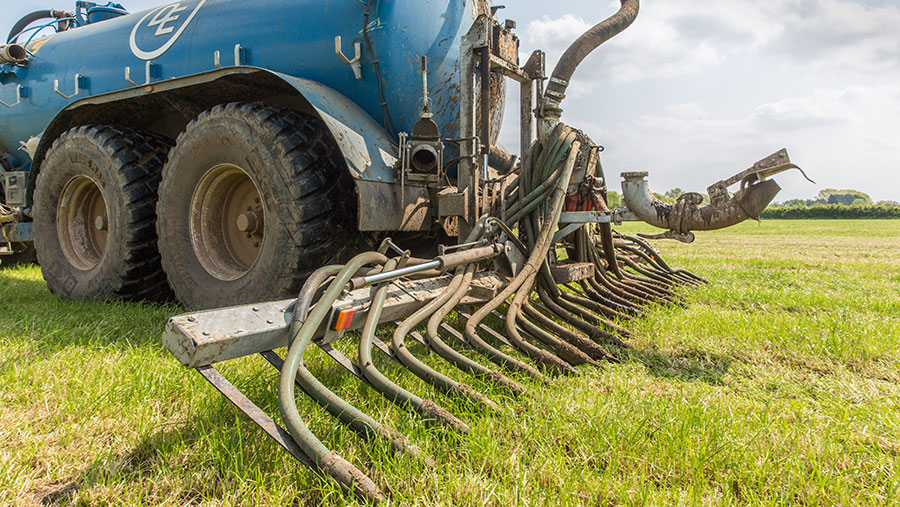January deadline for tougher rules on slurry storage and spreading in Scotland
 © Tim Scrivener
© Tim Scrivener Splash-plate slurry spreaders are to be phased out from 1 January in Scotland after the Scottish government announced sweeping rule changes to applications and storage.
The new regulations are a bid to reduce emissions and pollution incidents, and splash plates are seen as a major risk to both.
From 1 January 2022, farmers will be given five years to get rid of these spreaders and introduce low-emission, precision equipment in their place.
See also: Cattle unfairly blamed for climate change, says vets’ group
Changes to storage include tougher controls for slurry and digestate to reduce leakage. Cattle farms will also be required to have adequate slurry storage for 22 weeks, while pig units will need enough for 26 weeks.
However, lobbying by NFU Scotland (NFUS) has averted a potentially insurmountable requirement to replace all storage constructed before 1991.
The proposal was part of a 12-week consultation earlier this year, but NFUS argued successfully that the practicalities and financial implications made it unworkable.
Stores built before 1991 can now be kept, providing they are fit for purpose, according to NFUS. Where storage improvements are necessary, the changes will be phased in over five years.
But where a pre-1991 store is to be reconstructed or enlarged to meet storage requirements, then it will no longer be exempt and must meet British Standards.
Other new requirements include the siting of new storage facilities and silage bales at least 10m away from watercourses.
And after 1 January, any silage bales or bulk bags must not be unwrapped within the 10m distance from watercourses or surface water.
‘Consternation’
Sarah Cowie, NFUS environment policy manager, said that the consultation had caused a great deal of consternation and worry over potentially crippling financial investment.
While amendments to the proposals on the slurry store component had removed much of the anxiety, the investment required would still be significant, Ms Cowie said.
“A clear omission from the Scottish government announcement is what funding will be available to assist the industry to make necessary changes,” she said.
“The only available Scottish government support for slurry storage in 2021 was through a very limited Agri-Environment and Climate Scheme [AECS],” Ms Cowie pointed out.
While AECS rounds for 2022-24 have been confirmed, there are no details on whether this is an option for slurry storage and spreading investment during the transitional period.
Rule changes from 1 January 2022
- Farmers must comply with the Risk Assessment for Manures and Slurries (Rams) – an application planning tool.
- Splash-plate spreaders replaced with low-emission, precision spreading equipment over a five-year period.
- Silage bales or bulk bags must not be stored, opened, or unwrapped within 10m of any surface water.
- Silo, slurry storage systems or liquid digestate storage systems must not be constructed within 10m of watercourses.
- Pre-1991 facilities must be “fit for purpose”.
- Upgrades must meet British Standards.
- Reconstructed or enlarged facilities must have a life expectancy of at least 20 years.
- Minimum slurry store capacities – housed pigs, 26 weeks; cattle, 22 weeks.
- Sufficient storage capacity is required for liquid digestate either produced or imported on the farm during periods when application is not authorised.
Further reading
The new rules come under a set of amendments to the Water Environment (Controlled Activities) (Scotland) Regulations 2011.
Download from the Scottish government website [PDF]
